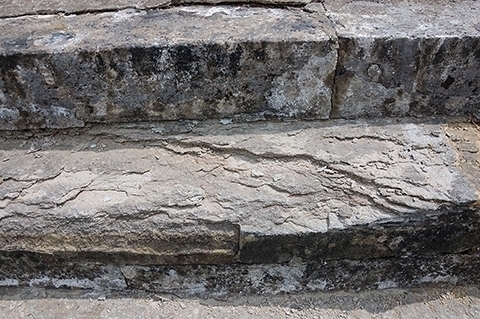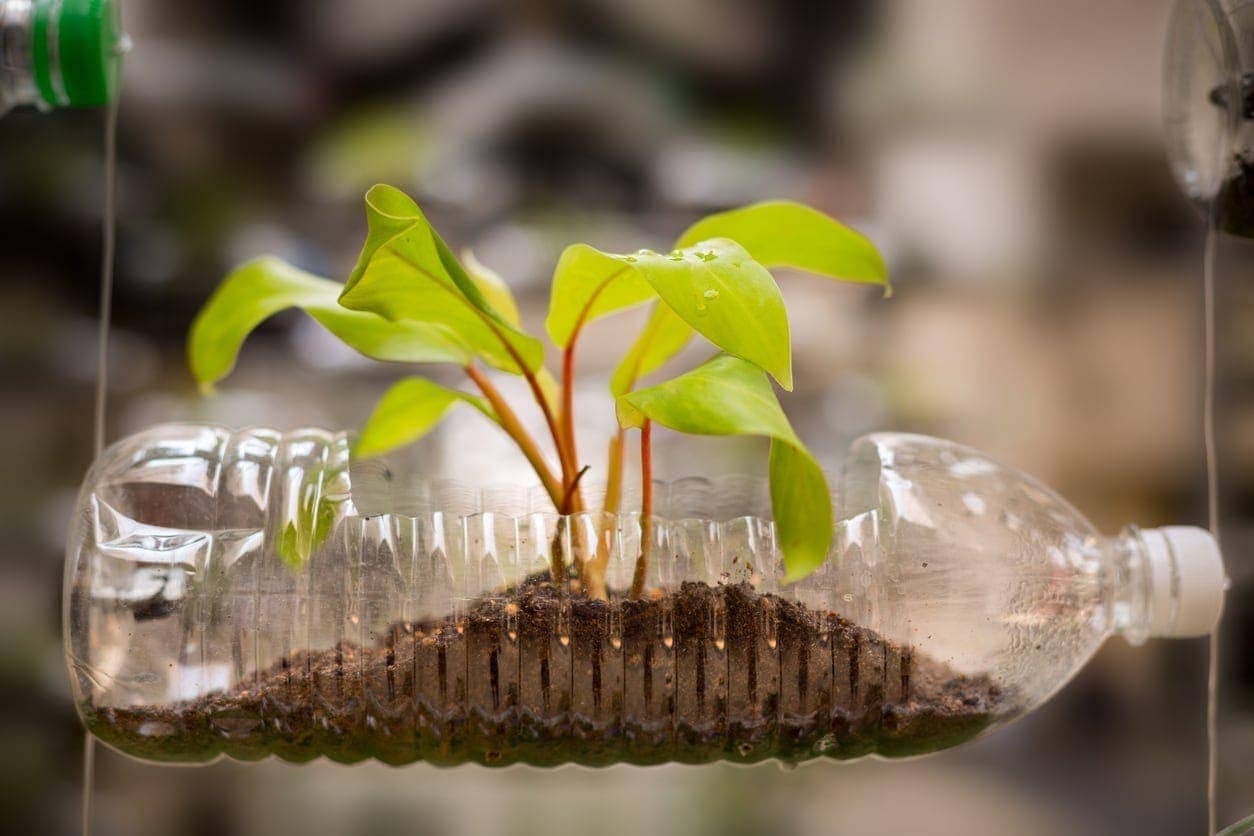
How a metal or glass bottle can help us care for the environment
06 of April of 2017
Very often we’re not aware of the little gestures that protect the environment. Especially those we don’t make and which therefore have no impact at all. [inlinetweet prefix=”” tweeter=”” suffix=””]The best impact on the environment is no impact at all.[/inlinetweet]
But in the same way that we don’t realise when we are not polluting, we don’t realise when we are. The majority of pollution today isn’t caused because mankind is inherently evil, but rather by a general lack of attention. Did you know that you can help the environment with reusable bottles?
Not polluting is impossible
We have to accept the fact – and this is critically important – that we cannot avoid polluting, in the broadest sense. Even if small, everything has an impact.
For example, you are reading this on a screen which uses energy. Even if you have the latest generation equipment, with very low energy consumption, millions of electrons have had to travel the world through cables which are placed there for the technology to be accessible.
Are you sitting down? The chair you are using will be good for a certain number of uses, and then it will have to be replaced, causing an impact on the environment. Are you standing up? Even the hardest rock wears down and has to be replaced after some time.
But this does not mean that we cannot live on the planet without taking care of the life on it (ourselves included). The biosphere is a system which feeds on energy from the Sun, and we are part of that system. The idea is that we use just the right amount of energy in order to avoid destroying everything in our path. Wishful thinking, perhaps.
How to do this? Looking for a low impact way of living, with the help of technology. Reusing instead of recycling.
What if we reuse, instead of recycling?
First and foremost: recycling is a wonderful, useful thing. Recycling saves millions of tonnes of oil every year by reducing the need to manufacture from scratch, using raw materials from previous objects at a lower energy cost than if manufactured for the first time. Recycling is good.
But recycling makes no sense when applied to things we could have done without in the first place. Particularly if we recycle them to make more of those things. This is the case with the PET (polyethylene terephthalate) plastic bottles we use so often.
Some facts we should know about PET bottles:
- Thousands of millions of PET plastic bottles are manufactured worldwide.
- To counter the myths: PET is a safe material. However, oil or natural gas are required in its manufacture. Moreover, PET bottles are single use. It is not advisable to reuse them once their contents have been consumed: they must be recycled.
- PET can be recycled (which is an advantage) but at a huge energy cost. Mechanical recycling (more affordable) requires heating the polymer to temperatures of between 150 to 180ºC to produce lower quality polymers, due to the impurities they contain. These impurities can be eliminated using other, more costly, recycling methods (>280°C).
- In 2009, Japan, one of the countries with the highest recycling rates, processed 77.9% of all PET plastic bottles sold. Those not recycled (over 80% on a global level) end up in nature, mostly in the oceans.
- Despite frequent claims to the contrary, PET plastic is not biodegradable. This was evidenced in 2013 by the Swinburne University of Technology, amongst many others. If not recycled, this material fragments and accumulates in the food chain.
We are constantly reading about the virtues of recycling polymers, a field in which much progress has no doubt been made. And we congratulate ourselves on recycling more or finding alternative uses for used PET bottles. But would it not be better to avoid manufacturing bottles, thus not having to recycle them later?
Here is where reusable bottles made of glass or metal come into play to protect the environment.
Advantages of metal and glass reusable bottles
Bottles contain liquids. Water, for example. And that is all that PET bottles and metal or glass bottles have in common. For the rest, the advantages all go to the metal and glass bottles. Except, perhaps, the energy costs of manufacturing them.
Both metal and glass require greater amounts of energy for shaping them than PET. This means that manufacturing a metal or glass bottle has a greater impact on the environment than manufacturing a PET bottle. And if this is so, why do we claim that metal or glass bottles are better? What is the advantage of a greater manufacturing impact?
The obvious, huge advantage of materials such as metal (mainly steel) and glass are their high durability. A metal or glass bottle, despite requiring much more initial energy, can practically last forever. In other words, it has a much longer life cycle than a PET bottle.
They are obviously reusable. Both metal and glass can be kept for long periods of time without being used, they can be washed in the dishwasher, reused as many times as desired, and sterilised in the home.
A glass bottle that you buy today can survive in the family for generations (unless you are especially clumsy). Not for nothing are jam jars made of glass. And the same applies to metal, although metal bottles tend to get rather dented.
Glass has the advantage of getting nicely cold in the fridge, so they are perfect for using in the summer at home. Metal bottles, especially thermally insulated ones, can maintain liquids cold for hours, some even for days. This makes them particularly useful for taking to work, as they can be reused to keep our coffee hot.
A cost-effective solution
It has been calculated (depending on the brand and size of bottle) that manufacturing and transporting the bottle account for 90% of the price you pay for the water. In other words, a one litre bottle costing one Euro contains 0.10 Euros of water and 0.90 Euros of PET plastic.
Compared to that, buying an easy-to-clean glass bottle such as this one for 4 Euros is cost-effective. Even if it is empty and you have to fill it with water yourself. Yes, it does cost four times more, but it lasts forever. And the same applies to a metal bottle, even if it is an insulated one costing 15 Euros.
What if I cannot avoid drinking bottled water?Will you be able to drink from it 15 times? If the answer is yes – as it undoubtedly will be – then you will save money.
It is true that tap water doesn’t taste very well everywhere, especially along the Mediterranean coast. There are times when it has so much calcium that you can even taste it while drinking. And so many families opt for bottled water. But there are various solutions available.
One of them is buying large bottles, rather than small ones. If we choose 8-litre containers rather than 1-litre bottles, we will have a much smaller impact on the environment. Do the sums at home. This is what I calculated:
Although it will vary a bit depending on the brand, the results will always be similar. As the volume increases, the number of grams of PET per litre will drop.
Another option is to buy a calcium filter. Shy away from miracle products, as per the Consumer Association’s advice, and buy a long-life filter. This will minimise our impact when the time comes to replace it.
There are undoubtedly still times when it is impossible to avoid buying a plastic bottle. But this is not the case at home or in the office, where you have no excuse not to use a glass bottle. Even if you travel frequently, you can take with you a small 500 ml insulated metal bottle filled with cold water
The plastic bottles of our time are like the combustion cars of the past century: an environmental problem which must be addressed from the demand side, and the negative impacts of which will eventually take their toll the longer we fail to do so.
Pollution (of whatever type) is not something that appears out of nowhere to make the headlines. We are all responsible for pollution between us, and it is in our power to make small gestures to avoid an irreversible environmental impact.
Very often we’re not aware of the little gestures that protect the environment. Especially those we don’t make and which therefore have no impact at all. The best impact on the environment is no impact at all.
Thank you for caring for the planet.










There are no comments yet